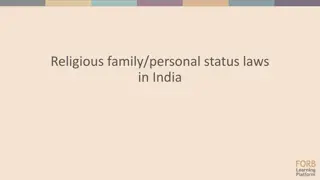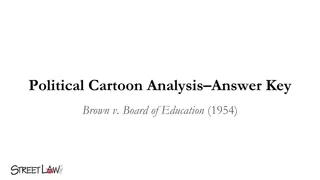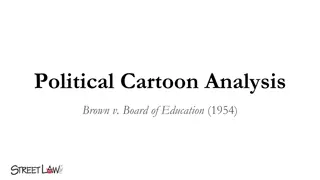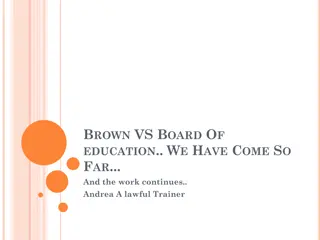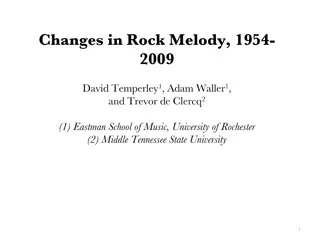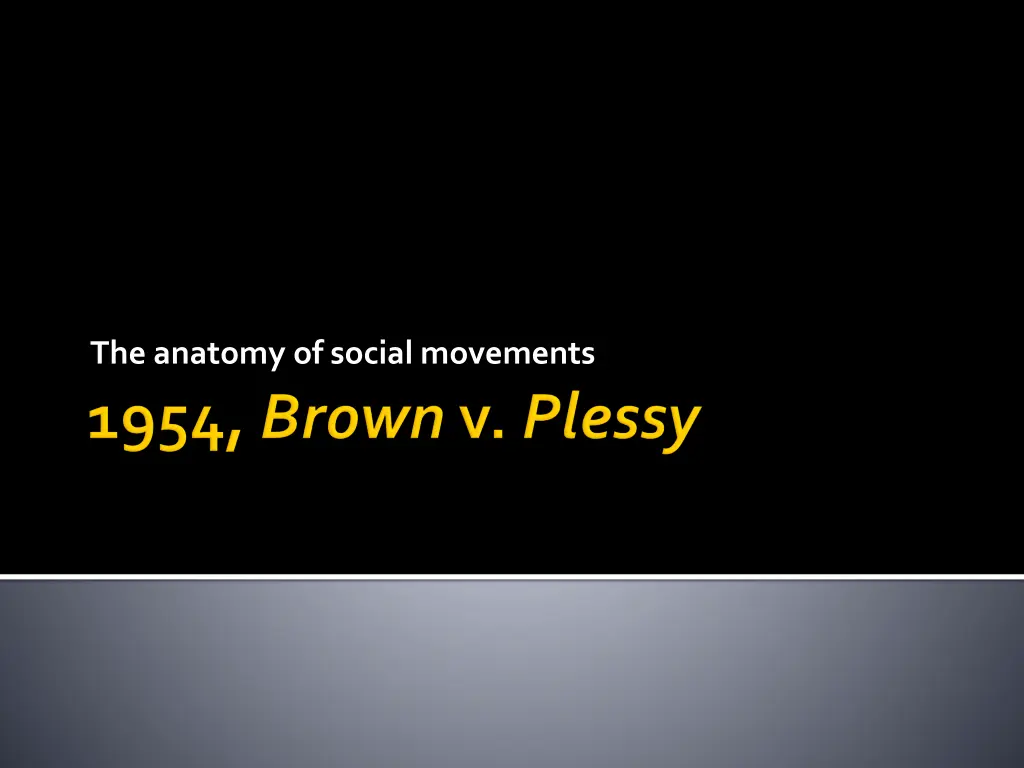
Anatomy of Social Movements and Legal Equality
Explore the constitutionality of laws segregating railway carriages by race and the fallacy of associating separation with inferiority. The argument challenges assumptions on racial dominance and the role of legislation in overcoming social prejudices.
Download Presentation

Please find below an Image/Link to download the presentation.
The content on the website is provided AS IS for your information and personal use only. It may not be sold, licensed, or shared on other websites without obtaining consent from the author. If you encounter any issues during the download, it is possible that the publisher has removed the file from their server.
You are allowed to download the files provided on this website for personal or commercial use, subject to the condition that they are used lawfully. All files are the property of their respective owners.
The content on the website is provided AS IS for your information and personal use only. It may not be sold, licensed, or shared on other websites without obtaining consent from the author.
E N D
Presentation Transcript
This case turns upon the constitutionality of an act of the general assembly of the state of Louisiana, passed in 1890, providing for separate railway carriages for the white and colored races. The constitutionality of this act is attacked upon the ground that it conflicts both with the 13th amendment of the constitution, abolishing slavery, and the 14thamendment, which prohibits certain restrictive legislation on the part of the states.
A statute which implies merely a legal distinction between the white and colored races-a distinction which is founded in the color of the two races, and which must always exist so long as white men are distinguished from the other race by color-has no tendency to destroy the legal equality of the two races, or re-establish a state of involuntary servitude.
We consider the underlying fallacy of the plaintiff's argument to consist in the assumption that the enforced separation of the two races stamps the colored race with a badge of inferiority. If this be so, it is not by reason of anything found in the act, but solely because the colored race chooses to put that construction upon it.
The argument necessarily assumes that if, as has been more than once the case, and is not unlikely to be so again, the colored race should become the dominant power in the state legislature, and should enact a law in precisely similar terms, it would thereby relegate the white race to an inferior position. We imagine that the white race, at least, would not acquiesce in this assumption.
The argument also assumes that social prejudices may be overcome by legislation, and that equal rights cannot be secured to the negro except by an enforced commingling of the two races. We cannot accept this proposition. If the two races are to meet upon terms of social equality, it must be the result of natural affinities, a mutual appreciation of each other's merits, and a voluntary consent of individuals.
The white race deems itself to be the dominant race in this country. And so it is, in prestige, in achievements, in education, in wealth, and in power. So, I doubt not, it will continue to be for all time, if it remains true to its great heritage, and holds fast to the principles of constitutional liberty. But in view of the constitution, in the eye of the law, there is in this country no superior, dominant, ruling class of citizens. There is no caste here. Our constitution is color-blind, and neither knows nor tolerates classes among citizens.
In respect of civil rights, all citizens are equal before the law. The humblest is the peer of the most powerful. The law regards man as man, and takes no account of his surroundings or of his color when his civil rights as guarantied by the supreme law of the land are involved. It is therefore to be regretted that this high tribunal, the final expositor of the fundamental law of the land, has reached the conclusion that it is competent for a state to regulate the enjoyment by citizens of their civil rights solely upon the basis of race.
In my opinion, the judgment this day rendered will, in time, prove to be quite as pernicious as the decision made by this tribunal in the Dred Scott Case . I cannot see but that, according to the principles this day announced, such state legislation, although conceived in hostility to, and enacted for the purpose of humiliating, citizens of the United States of a particular race, would be held to be consistent with the constitution.
Such considerations apply with added force to children in grade and high schools. To separate them from others of similar age and qualifications solely because of their race generates a feeling of inferiority as to their status in the community that may affect their hearts and minds in a way unlikely ever to be undone.
We conclude that in the field of public education the doctrine of "separate but equal" has no place. Separate educational facilities are inherently unequal. Therefore, we hold that the plaintiffs and others similarly situated for whom the actions have been brought are, by reason of the segregation complained of, deprived of the equal protection of the laws guaranteed by the 14thAmendment. This disposition makes unnecessary any discussion whether such segregation also violates the Due Process Clause of the 14thAmendment
K. B. Clark, Effect of Prejudice and Discrimination on Personality Development (Midcentury White House Conference on Children and Youth, 1950); Witmerand Kotinsky, Personality in the Making (1952), c. VI; Deutscherand Chein, The Psychological Effects of Enforced Segregation: A Survey of Social Science Opinion, 26 J. Psychol. 259 (1948); Chein, What are the Psychological Effects of [347 U.S. 483, 495] Segregation Under Conditions of Equal Facilities?, 3 Int. J. Opinion and Attitude Res. 229 (1949); Brameld, Educational Costs, in Discrimination and National Welfare (MacIver, ed., (1949), 44-48; Frazier, The Negro in the United States (1949), 674-681. And see generally Myrdal, An American Dilemma (1944).

